One of my personal heroes, mycologist David Arora recently put up a social media post on different cultures that eat Ramarias (various species of coral mushrooms). In a nutshell, he talked about the variety of Ramaria species and the supposed intestinal distress that deters American mushroom hunters from eating them, then shows evidence to the contrary via pictures from around the world.
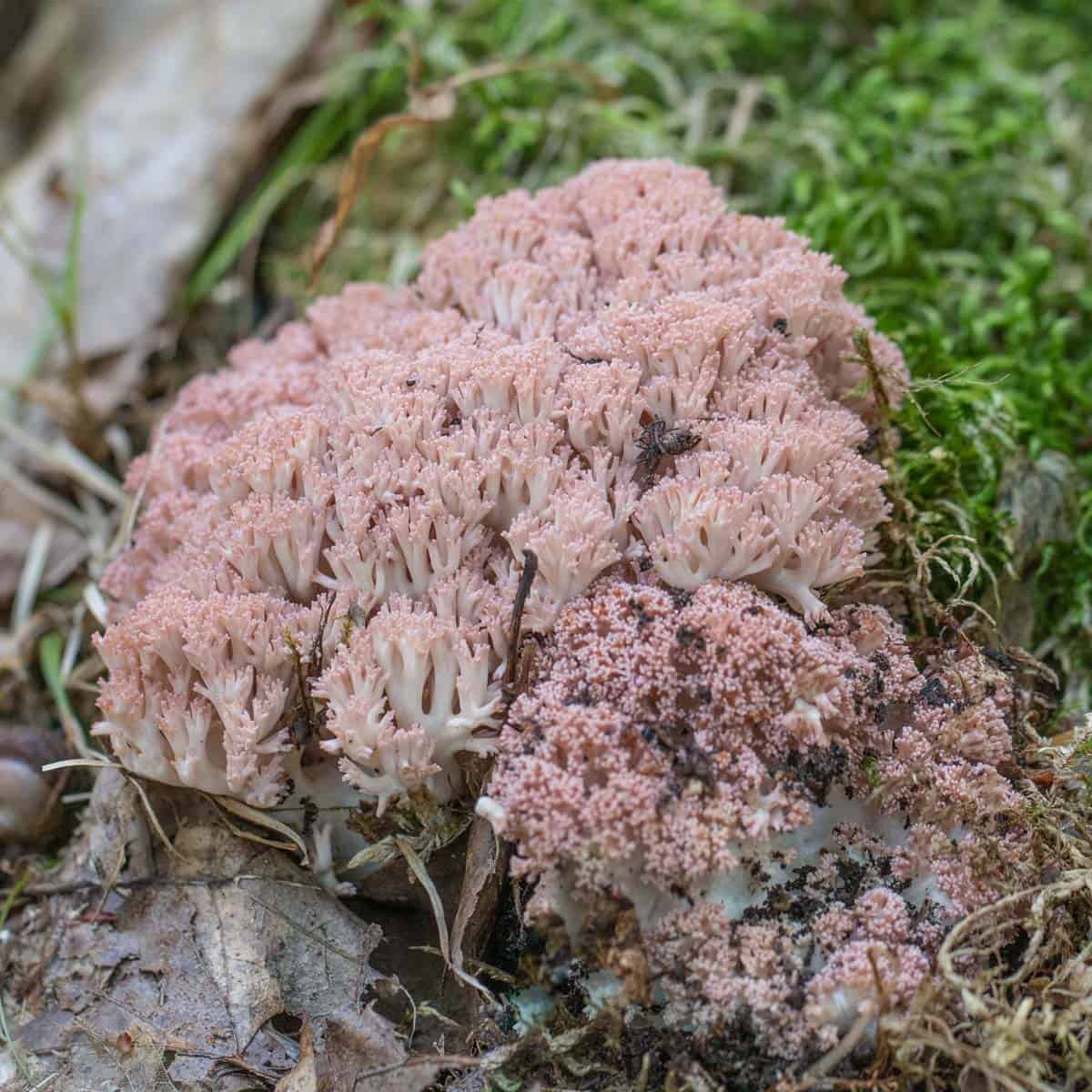
His authoritative voice on the subject is without equal, and supports what I've found through eating various ramarias myself. From my experience, many are bitter or not terribly tasty, but those that taste good are very good, and gastric upset is quite rare-contrary to what many field guides will tell you about coral mushrooms.
I've eaten a number of different species, and have never had a single upset stomach. Of course, you should always know exactly what you're eating, and there is supposedly a dangerous red coral in Japan I've heard one should look out for.
Big thanks to David Arora for agreeing to let me borrow his pictures and quote him here. The article that follows is fascinating and gives an illuminating look at how fungaphobic American culture is when compared to others.
Coral Fungi
By David Arora
"Here are some photos of coral fungi (Ramaria spp.) being gathered or sold in Mexico, China, Thailand, and Massachusetts. Note how all the mushrooms are picked whole, including ramarias. None have been cut off at the base as per an earlier discussion."
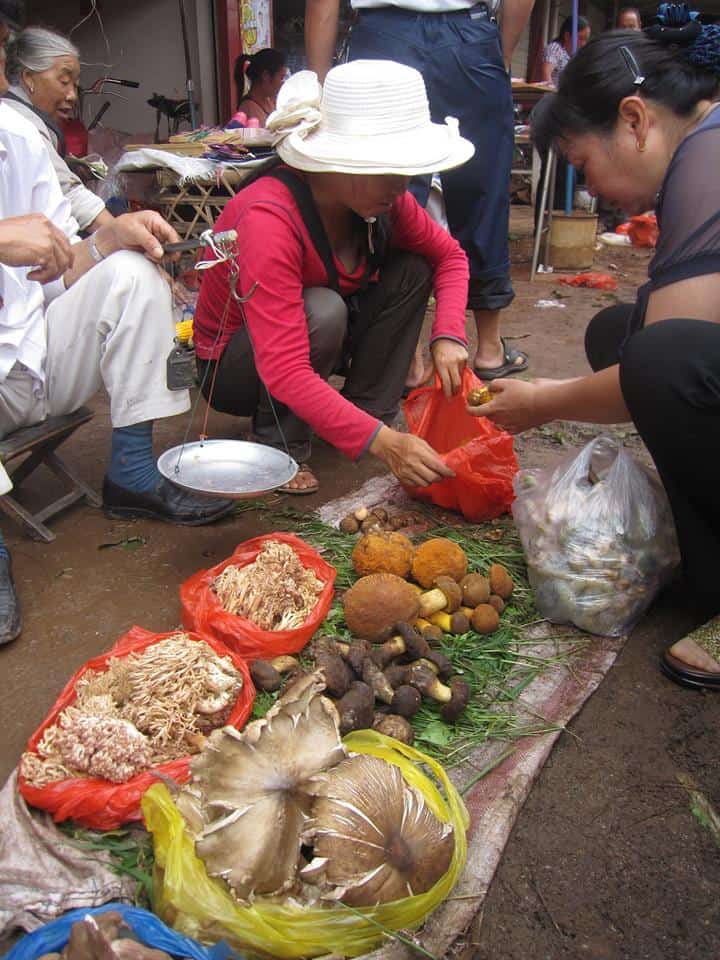
"Many sources say that corals (genus Ramaria) can have laxative effects. This is true, but the same can be said for most edible mushrooms, especially when not cooked well or eaten in excess.
So the more relevant question is: Do Ramarias have laxative effects with regularity, that is, do they cause gastrointestinal problems more often than do other edible mushrooms?"
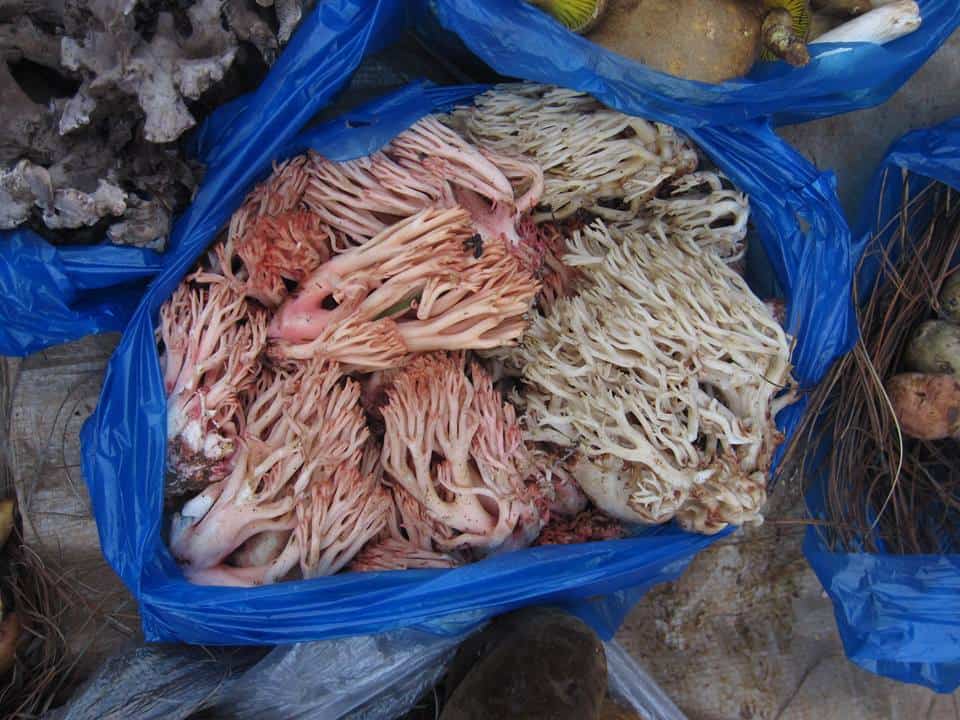
"In the 30+ year Beug study there are only two reported cases of Ramaria poisoning (gastrointestinal, Table 11).
This is a low number considering that ramarias are eaten pretty often, at least in the Northwest where pioneering families have vernacular names for them such as “rosebuds” (Ramaria botrytis group).

The tables in this paper have to be interpreted with caution because obviously there is no way to know how many people safely eat each kind of mushroom listed, but the data do suggest that ramarias cause far fewer problems than some other popular edibles such as honey mushrooms, shaggy parasols, leccinums, blewits, and chicken of the woods (which caused two deaths, one a small child who ate a small amount raw!)"
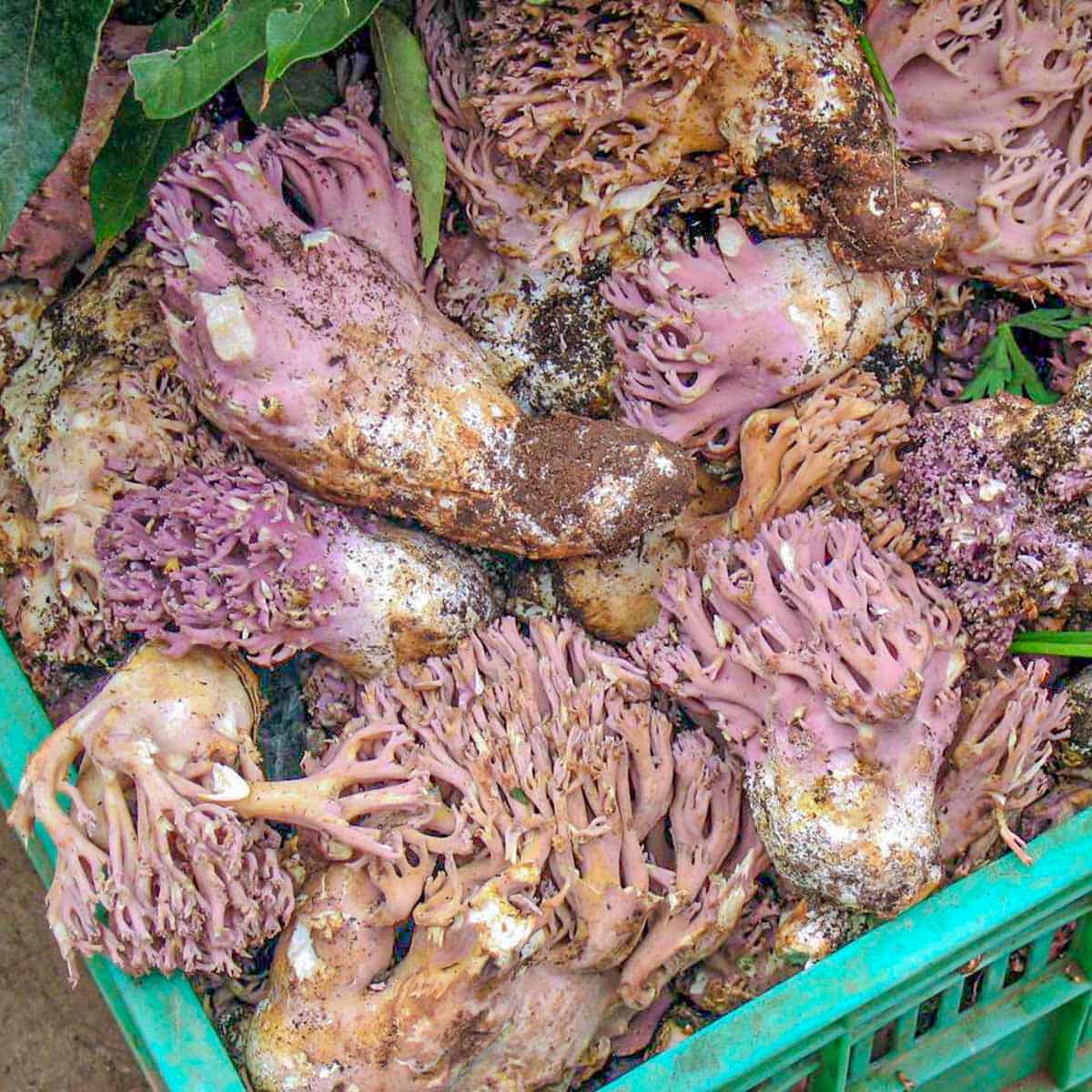
"As pointed out in the earlier thread, ramarias can be difficult to identify to species. In countries where they are eaten, however, such as China and Mexico, they seem not to discriminate much between the various species – they consider all the fleshy-stemmed ramarias to be edible and pick them for the market or dinner table"
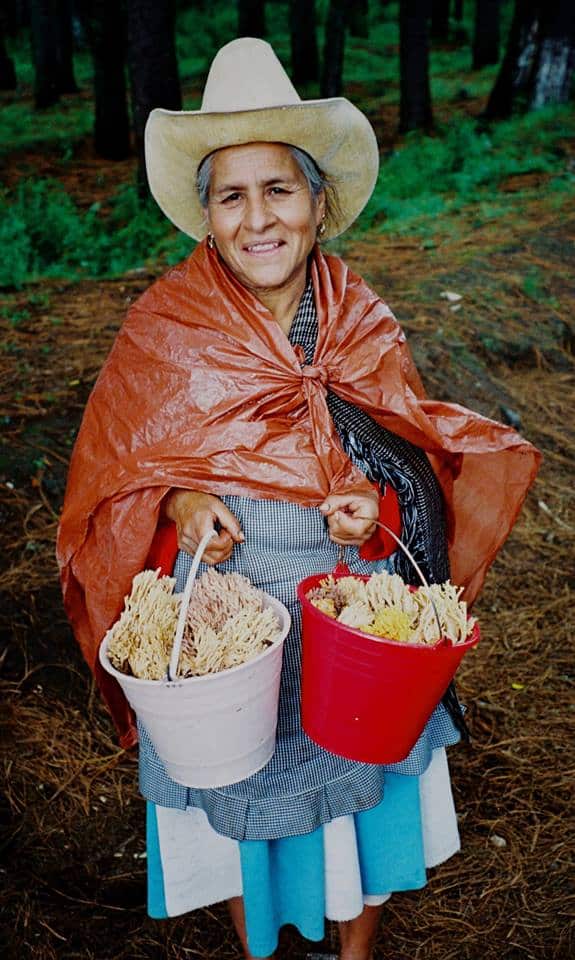
"In Mexico they are often called escobetas ("scrubbing brushes") and in Yunnan, sao ba jun ("broom mushrooms"). I find it hard to believe that the commercial trade could exist to the extent it does if some of the species were really poisonous or if a lot of people had trouble digesting them.
Therefore, I take the view that the cautions around ramarias in our field guides and web sites are overstated, especially with regard to the bright yellow and reddish-tipped ones. Keep in mind that our maintream culture is fungophobic. That means we are always on the lookout for reasons NOT to eat a mushroom instead of reasons to eat it. But I am interested to hear other people’s experiences."

"As for their culinary quality, it varies from species to species. Several are sweet and in one tasting involving several people, a yellow ramaria scored higher than morels. Some species, however, can be slightly bitter.
As they give off water in the skillet, taste their broth – in some of the yellow species it is quite delicious! They make an excellent side dish and a fantastic jerky. So I think it worthwhile to experiment with them. But follow the usual precautions of trying a small amount the first time (for each obviously different species) and cooking it thoroughly."
"The above comments apply to the ramarias with a fleshy stem or base. Ramariopsis spp., which tend to be thin and white with white spores, have a more dubious reputation. They are not related to Ramaria despite the similar name.
Corals (cont.)"
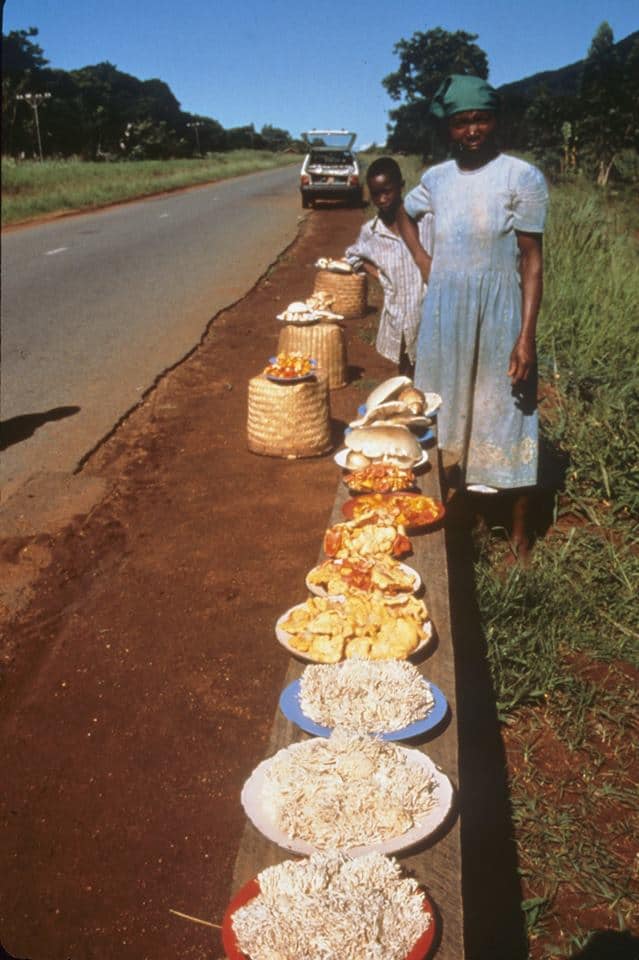
"Yes, clavulinas are edible; the first photo shows them for sale on a highway. However, they are prone to infection by a secondary fungus and are very fragile. They can also be confused with Ramariopsis (see previous post) though the texture is different."
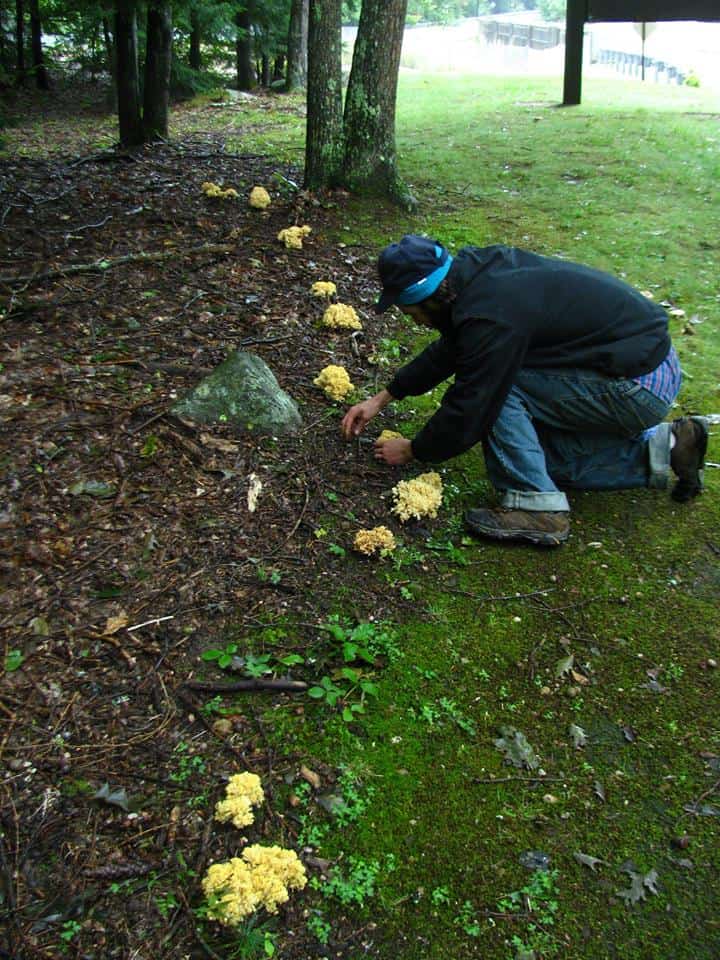
"The other photos show ramarias here in USA. Note the broth being given off while they sauté; they make a good side dish and also can be torn into thin strips, sautéed, then cooled and eaten cold like jerky."


www.lewishurst.com
It'd be great to see some pictures of how you cooked these 🙂
Alan Bergo
If you use the search bar on my site you see many ways they can be cooked that I’ve shared here.
Jamie Sturgess
yellow corals and occasional pink corals are very common and large numbers can be gathered in spring in panhandle Idaho. between morel bloom and spring kings. often in same locations... our local myco club: spring corals only. the falls are not studied enough even though the founder/mentor of the local club was the world authority on coral mushrooms. we skip the fall corals...
taste tests have place spring yellow Ramaria corals above morels and spring boletes on occasion...
Alan Bergo
I really like my local, pink corals. I've eaten a few yellow ones here and they were fine.
Marija Helt
Great article : ) I've been eating Ramaria largentii for a number of years here in the Southern Rockies, having learned about it from an attendee of one of my forays. Prior to that, I simply appreciated its beauty. While I don't eat massive quantities of it, I've not had any problems having wine with it.
Alan Bergo
Thanks Marija, that's very helpful to know. There isn't a lot of information about eating them online.
Jsun Lau
Inspiring and exciting,
the link wasn't working with the %28
http://%28www.namyco.org/docs/Poisonings30year.pdf)
Alan Bergo
Thanks, looks like they replaced it, I updated the link.
lisa
Great info
Alan Bergo
Thanks, I’m on it
Marvin Keating
Coprinus spp. don't contain Coprine, only some Coprinopsis species do.
Alan Bergo
Thanks for the clarification. A bit of a moot point since we're talking about Ramaria in the post here, but yes, for specificity I should have just used atramentaria for a specific example, or some terminology like coprinoid, etc.
Richard J
Here's a nice video of a Mexican preparation of coral mushrooms. The local name seems to be "birds legs" but I don't know the exact species. Certainly meatier than the ones we get in western PA.
https://www.youtube.com/watch?v=jAayiHjyxO4
Alan Bergo
Thanks.
Fancy D.
We harvested and cooked our local Ramaria into a rice and leafy-greens dish. They made the whole dish taste like a hotdog (it was unexpectedly pleasant) and they had a fabulous texture. Though we experienced no pain or digestive distress, we found ourselves vying for a turn on the toilet early the next morning and through the day. It created a bit of a system flush. Could have been the ingredient combo in the dish or perhaps we put a little too much Ramaria in. Both are very possible! We haven’t had that reaction in the past. Won’t be afraid to eat more, but we’ll be moderating their use bit more closely ;). It was certainly more Ramaria than we’ve eaten at one time before. It’s a good reminder when you’re pampered on morels that treat your body wonderfully!
Susan Stanich
This week a line of brilliantly yellow coral mushrooms with thick stalks are radiating out from oaks in a mixed spruce-popple-birch-hardwood forest in NE Minn. Looked just like the last photo (below the street vendors), in the site, but I'm not sure how they were being identified. Are they ramaria?, I thought these were spring/summer mushrooms.... Today I picked three bundles, about 4 lbs. altogether, and will approach them, as suggested, conservatively.
Thank you for the site.
Alan Bergo
Hi Susan. Early last week after our super rains around the metro I came on some nice yellow Ramaria. I did the taste and spit and they were fine, albeit very mild. I had no problem eating small amounts, well cooked. Ramaria botrytis, the pink coral, remains the absolute best of the genus I’ve tasted, keep an eye out for them, I had a friend who picked a boatload up by you last week, growing with oak and pine.
Ric
I myself have never had a problem with them, if i find a new variety in my area or one that ever looks different. If it's bitter I spit it out, but if its nutty and buttery i try a small amount, of the ones that taste good I have never had an adverse reaction even in their raw state. Obviously, do your own due dilligence, but that has been my experience. I live in michigan and the yellow orange ones here taste the best, but the white variety in my area is very bitter so I dont mess with it.
Alan Bergo
Great to know, thanks for sharing, I do the taste and spit if I find a good looking patch, has always worked for me.
Anthony M
Could you post link to David's original post?
Alan Bergo
Sorry, his post was in a private FB group.
AMR
Where is this "Social Media Post" from Mr. Arora?
I'd like to read more.
Alan Bergo
It's on a private group in facebook. It isn't accessible unless you're already a member, and they're not taking new members, which is why I put a copy on my site here.
Lori
Very interesting article, I have wanted learn more about coral mushrooms and figure out which ones are edible in my area.
Alan Bergo
I know right? Mr. Arora has put up a number of these articles, I've loved every one.
eric
I eat crown tip coral Artomyces pyxidatus, awesome sloooow cooked in butter, I dont know about the Ramaria tho
Alan Bergo
I've eaten plenty of both. For me, ramaria species are much harder to find, but have a better texture than pyxidatus, which can be a little flimsy. Crown tipped corals are widely available though, and tempting.
Will K.
The only coral I've ever eaten is Clavicorona pyxidata. It's good, but I don't gather it often because it's hard to find enough to gather in quantity. Still, it makes an interesting and tasty pizza topping. I may have to branch out and try some of the Ramarias.
Patty Shaw
Great article ! I find these pretty often on my forages through the woods.
I am excited to learn of their culinary value and I cannot wait to try the yellow ones come spring. I have often marveled at their beauty and gorgeous colors.
I have seen pink...purple...beige... and yellow and am amazed how they so closely resemble the corals in the ocean. Thank you for a great article on the ramarias mushrooms.
Fred Lt.
It is apparrent, at least to me, that worldwise a variety of species of Ramulariaceae are eaten by many people with few adverse effects. These adverse effects may be relatedto what else was consumed with them, or idiopathic responses by individual consumers. David Arora is a very good mycologist, but he is neither a toxicologist nor an MD. However his mycological and social skills are very good. So I would accept his identifications without question. He has a long history of interacing with different cultures so his "Antropomorycological" skills are extremely good. This is important in this context because the questions posed are relared to whether or not Species of the Ramulariaceae generally cause adverse physiological distress ito those who eat these fungi. Until and unless it is shown that the incidences of ADVERSE PHYSIOLOGICAL EVENTS OCCUR FOLLOWING INGESTION OF Ramulartaceae spp.; the data strongly suggest that as long as one knows the fungus he/she is eating is a species within the Ramulariaceae and cooks them and refrains from alcohol , at least before and after eating them, and does not overindulge that adverse physiological distress should be rare and is likely idiopathic. The possibility exists that these idiopathic responses may be related to what medications the consumer may be on.
Alan Bergo
I haven't heard anything about alcohol interaction with Ramarias, only with Coprinoid species. Do you have any examples to share?